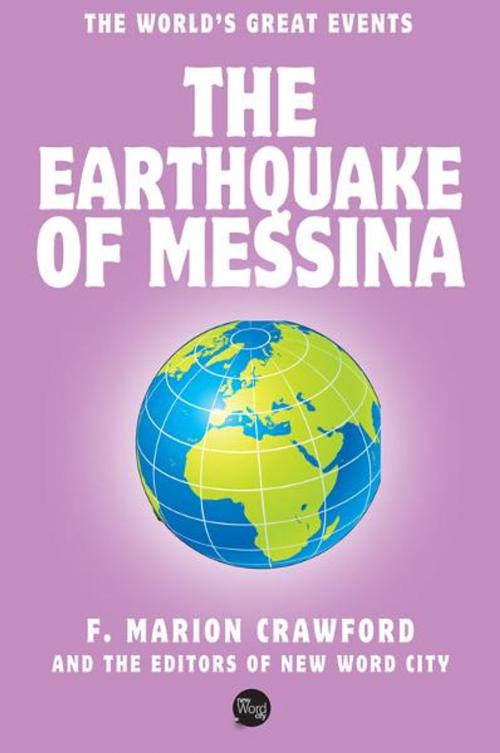| Author: | F. Marion Crawford and The Editors of New Word City | ISBN: | 9781612301662 |
| Publisher: | New Word City, Inc. | Publication: | December 6, 2011 |
| Imprint: | New Word City, Inc. | Language: | English |
| Author: | F. Marion Crawford and The Editors of New Word City |
| ISBN: | 9781612301662 |
| Publisher: | New Word City, Inc. |
| Publication: | December 6, 2011 |
| Imprint: | New Word City, Inc. |
| Language: | English |
On the morning of December 28, 1908, a massive earthquake killed more than 100,000 people in Messina, Sicilys third largest city, and took the lives of thousands more throughout southern Italy. Relief efforts began at once. Newspaper reporters and other writers from all quarters rushed to the scene of the disaster. Among all the accounts, the one that deserves a permanent place in history as the record of the tragedy is by the noted American novelist, F. Marion Crawford, who was staying at the time in Sorrento, a near-by Italian town. Messina is situated in a volcanic region, close to the famous peaks of Etna and Vesuvius. Before the 1908 tremor, the citys most tragic previous quake was in 1783, in which the death toll was 30,000. There had been subsequent shocks in 1894 and 1896; and the city had a grim premonitory warning in 1905, when an earthquake killed more than 500 people. But the survivors blithely went back to their lives and their work. They did the same even after what Crawford vividly describes as the greatest disaster of history.
On the morning of December 28, 1908, a massive earthquake killed more than 100,000 people in Messina, Sicilys third largest city, and took the lives of thousands more throughout southern Italy. Relief efforts began at once. Newspaper reporters and other writers from all quarters rushed to the scene of the disaster. Among all the accounts, the one that deserves a permanent place in history as the record of the tragedy is by the noted American novelist, F. Marion Crawford, who was staying at the time in Sorrento, a near-by Italian town. Messina is situated in a volcanic region, close to the famous peaks of Etna and Vesuvius. Before the 1908 tremor, the citys most tragic previous quake was in 1783, in which the death toll was 30,000. There had been subsequent shocks in 1894 and 1896; and the city had a grim premonitory warning in 1905, when an earthquake killed more than 500 people. But the survivors blithely went back to their lives and their work. They did the same even after what Crawford vividly describes as the greatest disaster of history.















